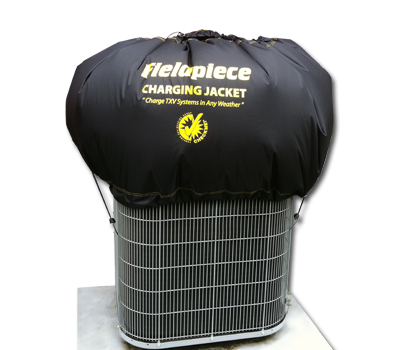Get Tech Tips
Subscribe to free tech tips.
Is it too cold to set the charge?

I've heard the phrase, “It's too cold to set the charge!” for as long as I've been in the trade.
I've also heard some variations of, “We need to come back and set the charge,” or, “We need to come back to do XYZ [some other thing].”
Granted, there are cases where you do actually need to come back. But in my experience, a lot of this is just punting the ball to the next tech. Admittedly, I'm in Florida, so if you live in the great white north, you will likely be doing your A/C startups in the spring. Understandable.
So, here are the next questions you need to be able to answer if you are going to say you “can't set the charge:”
#1 – Have you read the manufacturer's specs on how to charge properly? They should have low ambient charging info and lots of other useful things. Read the manual and see what you find.
#2 – Have you taken suction, head, subcooling, superheat, delta T, and static? If you haven't checked the 5 pillars, you haven't done your full due diligence.

#3 – For systems with no data, do you have a good feel for the common rules of thumb related to charging? If not, you are in the right place; we have several articles on charging. (You can read an article on refrigerant charging basics here, one on checking the charge on a heat pump in winter here, and one on charging a sealed system here. Those are just the tip of the iceberg.)
#4 – Drive up the condensing temperature (on TXV and EEV systems) and check the subcool.
How do we drive up the condensing temperature?

If you have a TXV system, one of the best ways to drive up head pressure in a controlled manner so that it can stabilize is by using the Fieldpiece charging jacket. You can control the top opening size to drive up the liquid pressure until you get to a pressure higher than the minimum pressure difference across the valve. I will often use a 100° condensing temperature as a rule of thumb if the manufacturer doesn't give a guideline, though many will use 110°.
I also made a video showing how to use the charging jacket. That video also gives a brief overview of the manufacturer's literature and some things to think about when using the charging jacket.
Return trips leave the system running improperly, waste money, and annoy your co-workers.
Sometimes, you have no choice but to set up a return trip for a warmer day, but any job you can finish the first time is time and money saved for you and the customer.
—Bryan
P.S. – The Kalos techs also used the Fieldpiece charging jacket in my hands-on class about charging and testing a heat pump in heat mode. You can watch that full class HERE.











Comments
Sound advice.
Sound advice.
On new system installations. The manufacturer usually sets the condenser with enough refrigerant for 15′ if lineset ( check your installation manual to be sure). Then use the described calculations. (.6 oz. per linear foot of line set). Weigh this in. I usually add the additional refrigerant to break the vacuum before opening the isolation valves. If I can’t get it all in beforehand I add with system running. I have used this practice for several years and in many cases the subcool and superheat were spot on. Of course the duct and system were properly sized. Delta T and static PSI always came up within spec.
On new system installations. The manufacturer usually sets the condenser with enough refrigerant for 15′ if lineset ( check your installation manual to be sure). Then use the described calculations. (.6 oz. per linear foot of line set). Weigh this in. I usually add the additional refrigerant to break the vacuum before opening the isolation valves. If I can’t get it all in beforehand I add with system running. I have used this practice for several years and in many cases the subcool and superheat were spot on. Of course the duct and system were properly sized. Delta T and static PSI always came up within spec.
Here’s an additional charge level validation test. In cool weather, for a minimum duration of 1hours after setting the charge, set tstat to highest heat temperature, then COOK the house HOT. Then activate A/C only. After ONLY 5 MIN MAX A/C run time, quickly check superheat too.
Here’s an additional charge level validation test. In cool weather, for a minimum duration of 1hours after setting the charge, set tstat to highest heat temperature, then COOK the house HOT. Then activate A/C only. After ONLY 5 MIN MAX A/C run time, quickly check superheat too.
To leave a comment, you need to log in.
Log In